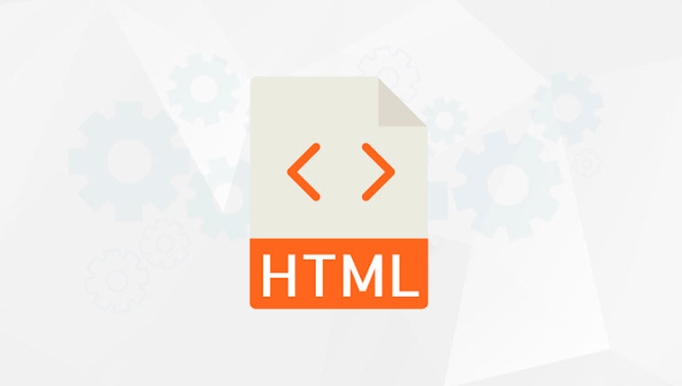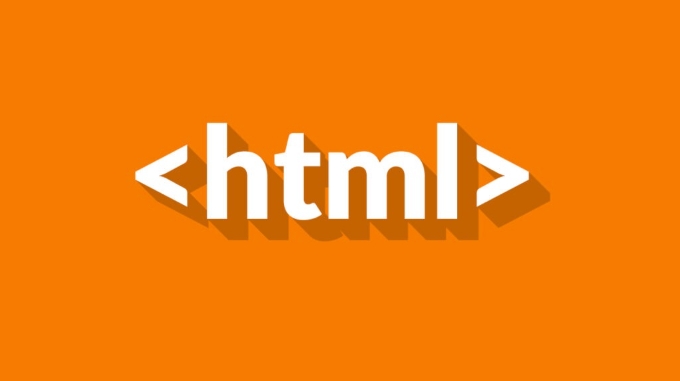Use  . Specifically, it includes: 1. Different cropped images under different screen sizes; 2. Support modern formats such as WebP or AVIF; 3. High-definition pictures of high-resolution devices. Structures need to use <source> to define the conditions and image sources in turn, and use
. Specifically, it includes: 1. Different cropped images under different screen sizes; 2. Support modern formats such as WebP or AVIF; 3. High-definition pictures of high-resolution devices. Structures need to use <source> to define the conditions and image sources in turn, and use  as a fallback scheme. At the same time, be careful to always include
as a fallback scheme. At the same time, be careful to always include  , use srcset instead of src, and specify the format through type to ensure compatibility. In addition, breakpoints should be set reasonably, pictures should be optimized, and valid alt text should be retained. In simple scenarios, only img srcset can be used to achieve responsiveness.
, use srcset instead of src, and specify the format through type to ensure compatibility. In addition, breakpoints should be set reasonably, pictures should be optimized, and valid alt text should be retained. In simple scenarios, only img srcset can be used to achieve responsiveness.

Using the <picture></picture> element is one of the best ways to handle responsive images on the web. It gives you more control over which image gets shown based on screen size, resolution, and even format support. Let's break it down into what you actually need to know and how to use it effectively.

What the <picture></picture> element does
The <picture></picture> element works like a container that holds multiple <source></source> elements along with a fallback <img src="/static/imghw/default1.png" data-src="https://img.php.cn/upload/article/000/000/000/175233903669148.jpeg" class="lazy" alt="How to use the picture element for responsive images?" > . Browsers check each <source></source> in order and load the first one that matches the current device conditions — things like screen width or pixel density.
It's especially useful when you want:

- Different crops of an image for different screen sizes
- Modern image formats (like WebP or AVIF) for supported browsers
- High-resolution versions for retina displays
This isn't just about saving bandwidth — it's about showing the right image at the right time without sacrificing quality or layout.
How to structure your <picture></picture> tag
Here's a basic example:

<picture> <source srcset="large.jpg" media="(min-width: 1024px)"> <source srcset="medium.jpg" media="(min-width: 768px)"> <img src="/static/imghw/default1.png" data-src="small.jpg" class="lazy" alt="A responsive image"> </picture>
Each <source> defines a different image ( srcset ) and a condition ( media ). The browser picks the first matching source, or falls back to the <img src="/static/imghw/default1.png" data-src="image.jpg" class="lazy" alt="How to use the picture element for responsive images?" > if none match.
A few things to keep in mind:
- Always include an
<img src="/static/imghw/default1.png" data-src="image.jpg" class="lazy" alt="How to use the picture element for responsive images?" >tag as the last child — it's required. - Use
srcsetinstead ofsrcinside<source>. - You can also use
typeattribute to specify image formats.
When to use type and why it matters
If you're using next-gen image formats like WebP or AVIF, not all browsers support them (though most modern ones do). That's where the type attribute comes in handy:
<picture> <source srcset="image.avif" type="image/avif"> <source srcset="image.webp" type="image/webp"> <img src="/static/imghw/default1.png" data-src="image.jpg" class="lazy" alt="Fallback image"> </picture>
In this case, the browser checks if it supports AVIF first. If not, it tries WebP. If neither is supported, it loads the JPG version. This way, users get the best possible image format their browser supports — no extra work needed from you.
You don't have to worry about ordering too much here — browsers will pick the best match automatically based on support.
Tips for getting the most out of <picture></picture>
- Use meaningful breakpoints — Don't copy other people's media queries blindly. Use breakpoints that make sense for your design and content.
- Test across devices — Make sure your images look good and load correctly on mobile, tablet, and desktop.
- Don't forget
alttext — The<img alt="How to use the picture element for responsive images?" >still needs properalttext for accessibility and SEO. - Optimize your images — Even though
<picture></picture>helps with responsiveness, always compress and resize your images before putting them online.
Also, keep in mind that while <picture></picture> is powerful, it's not always necessary. For simple size changes without different crops or formats, img srcset and sizes might be enough.
Basically that's it.
The above is the detailed content of How to use the picture element for responsive images?. For more information, please follow other related articles on the PHP Chinese website!

Hot AI Tools

Undress AI Tool
Undress images for free

Undresser.AI Undress
AI-powered app for creating realistic nude photos

AI Clothes Remover
Online AI tool for removing clothes from photos.

Clothoff.io
AI clothes remover

Video Face Swap
Swap faces in any video effortlessly with our completely free AI face swap tool!

Hot Article

Hot Tools

Notepad++7.3.1
Easy-to-use and free code editor

SublimeText3 Chinese version
Chinese version, very easy to use

Zend Studio 13.0.1
Powerful PHP integrated development environment

Dreamweaver CS6
Visual web development tools

SublimeText3 Mac version
God-level code editing software (SublimeText3)
 Implementing Clickable Buttons Using the HTML button Element
Jul 07, 2025 am 02:31 AM
Implementing Clickable Buttons Using the HTML button Element
Jul 07, 2025 am 02:31 AM
To use HTML button elements to achieve clickable buttons, you must first master its basic usage and common precautions. 1. Create buttons with tags and define behaviors through type attributes (such as button, submit, reset), which is submitted by default; 2. Add interactive functions through JavaScript, which can be written inline or bind event listeners through ID to improve maintenance; 3. Use CSS to customize styles, including background color, border, rounded corners and hover/active status effects to enhance user experience; 4. Pay attention to common problems: make sure that the disabled attribute is not enabled, JS events are correctly bound, layout occlusion, and use the help of developer tools to troubleshoot exceptions. Master this
 Configuring Document Metadata Within the HTML head Element
Jul 09, 2025 am 02:30 AM
Configuring Document Metadata Within the HTML head Element
Jul 09, 2025 am 02:30 AM
Metadata in HTMLhead is crucial for SEO, social sharing, and browser behavior. 1. Set the page title and description, use and keep it concise and unique; 2. Add OpenGraph and Twitter card information to optimize social sharing effects, pay attention to the image size and use debugging tools to test; 3. Define the character set and viewport settings to ensure multi-language support is adapted to the mobile terminal; 4. Optional tags such as author copyright, robots control and canonical prevent duplicate content should also be configured reasonably.
 Best HTML tutorial for beginners in 2025
Jul 08, 2025 am 12:25 AM
Best HTML tutorial for beginners in 2025
Jul 08, 2025 am 12:25 AM
TolearnHTMLin2025,chooseatutorialthatbalanceshands-onpracticewithmodernstandardsandintegratesCSSandJavaScriptbasics.1.Prioritizehands-onlearningwithstep-by-stepprojectslikebuildingapersonalprofileorbloglayout.2.EnsureitcoversmodernHTMLelementssuchas,
 HTML for email templates tutorial
Jul 10, 2025 pm 02:01 PM
HTML for email templates tutorial
Jul 10, 2025 pm 02:01 PM
How to make HTML mail templates with good compatibility? First, you need to build a structure with tables to avoid using div flex or grid layout; secondly, all styles must be inlined and cannot rely on external CSS; then the picture should be added with alt description and use a public URL, and the buttons should be simulated with a table or td with background color; finally, you must test and adjust the details on multiple clients.
 How to associate captions with images or media using the html figure and figcaption elements?
Jul 07, 2025 am 02:30 AM
How to associate captions with images or media using the html figure and figcaption elements?
Jul 07, 2025 am 02:30 AM
Using HTML sums allows for intuitive and semantic clarity to add caption text to images or media. 1. Used to wrap independent media content, such as pictures, videos or code blocks; 2. It is placed as its explanatory text, and can be located above or below the media; 3. They not only improve the clarity of the page structure, but also enhance accessibility and SEO effect; 4. When using it, you should pay attention to avoid abuse, and apply to content that needs to be emphasized and accompanied by description, rather than ordinary decorative pictures; 5. The alt attribute that cannot be ignored, which is different from figcaption; 6. The figcaption is flexible and can be placed at the top or bottom of the figure as needed. Using these two tags correctly helps to build semantic and easy to understand web content.
 How to handle forms submission in HTML without a server?
Jul 09, 2025 am 01:14 AM
How to handle forms submission in HTML without a server?
Jul 09, 2025 am 01:14 AM
When there is no backend server, HTML form submission can still be processed through front-end technology or third-party services. Specific methods include: 1. Use JavaScript to intercept form submissions to achieve input verification and user feedback, but the data will not be persisted; 2. Use third-party serverless form services such as Formspree to collect data and provide email notification and redirection functions; 3. Use localStorage to store temporary client data, which is suitable for saving user preferences or managing single-page application status, but is not suitable for long-term storage of sensitive information.
 What are the most commonly used global attributes in html?
Jul 10, 2025 am 10:58 AM
What are the most commonly used global attributes in html?
Jul 10, 2025 am 10:58 AM
class, id, style, data-, and title are the most commonly used global attributes in HTML. class is used to specify one or more class names to facilitate style setting and JavaScript operations; id provides unique identifiers for elements, suitable for anchor jumps and JavaScript control; style allows for inline styles to be added, suitable for temporary debugging but not recommended for large-scale use; data-properties are used to store custom data, which is convenient for front-end and back-end interaction; title is used to add mouseover prompts, but its style and behavior are limited by the browser. Reasonable selection of these attributes can improve development efficiency and user experience.
 Implementing Native Lazy Loading for Images in HTML
Jul 12, 2025 am 12:48 AM
Implementing Native Lazy Loading for Images in HTML
Jul 12, 2025 am 12:48 AM
Native lazy loading is a built-in browser function that enables lazy loading of pictures by adding loading="lazy" attribute to the tag. 1. It does not require JavaScript or third-party libraries, and is used directly in HTML; 2. It is suitable for pictures that are not displayed on the first screen below the page, picture gallery scrolling add-ons and large picture resources; 3. It is not suitable for pictures with first screen or display:none; 4. When using it, a suitable placeholder should be set to avoid layout jitter; 5. It should optimize responsive image loading in combination with srcset and sizes attributes; 6. Compatibility issues need to be considered. Some old browsers do not support it. They can be used through feature detection and combined with JavaScript solutions.






